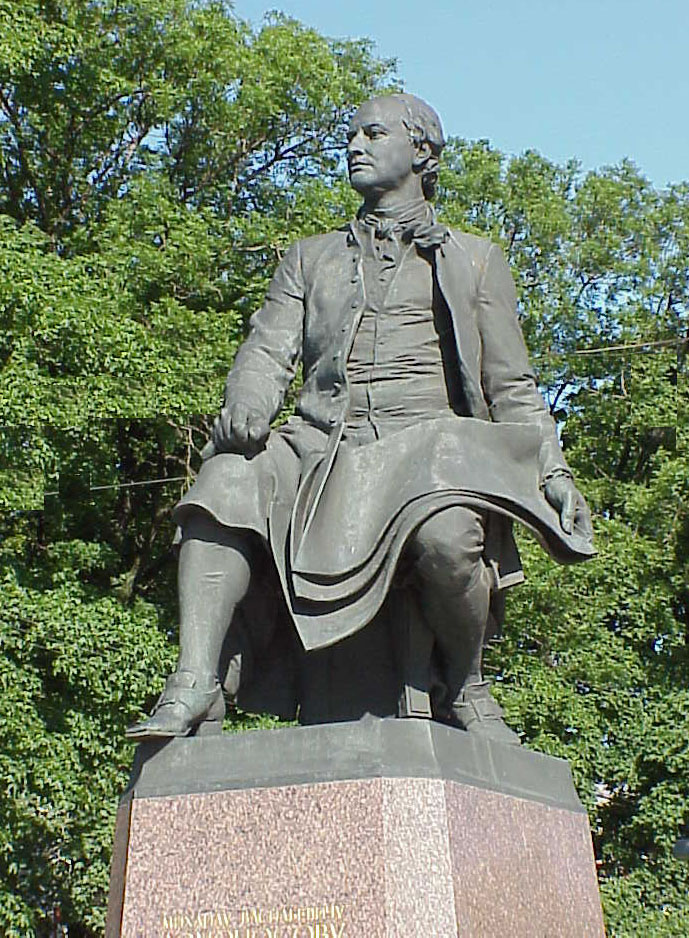St. Petersburg, Russia/stpet036
Previous | Home | NextThe Lomonosov statue. The view is northward, back up Mendeleevskaya liniya. Lomonosov (1711-1765) was sometimes called the "Lavoisier of Russia." Lomonosov anticipated some of the work of Lavoisier and rejected the philosophy of phlogiston; sometimes the law of conservation of mass is informally termed the "Lomonosov-Lavoisier law." For a scientist in the 18th century, he had a remarkably modern view of gases -- he thought air was composed of hard molecules and that heat was simply "molecules in motion." In 1749 he constructed the first chemistry laboratory for student training, long before Giessen (Germany). Lomonosov had broad interests; he suggested Venus had an atmosphere, recorded the freezing point of mercury, developed vivid colors for stained glass, and performed pioneer work in anthropology, geology, mineralogy, literature, and education. Far removed from the scientific centers in western Europe, however, this polymath remained relatively unknown despite his advanced concepts.
